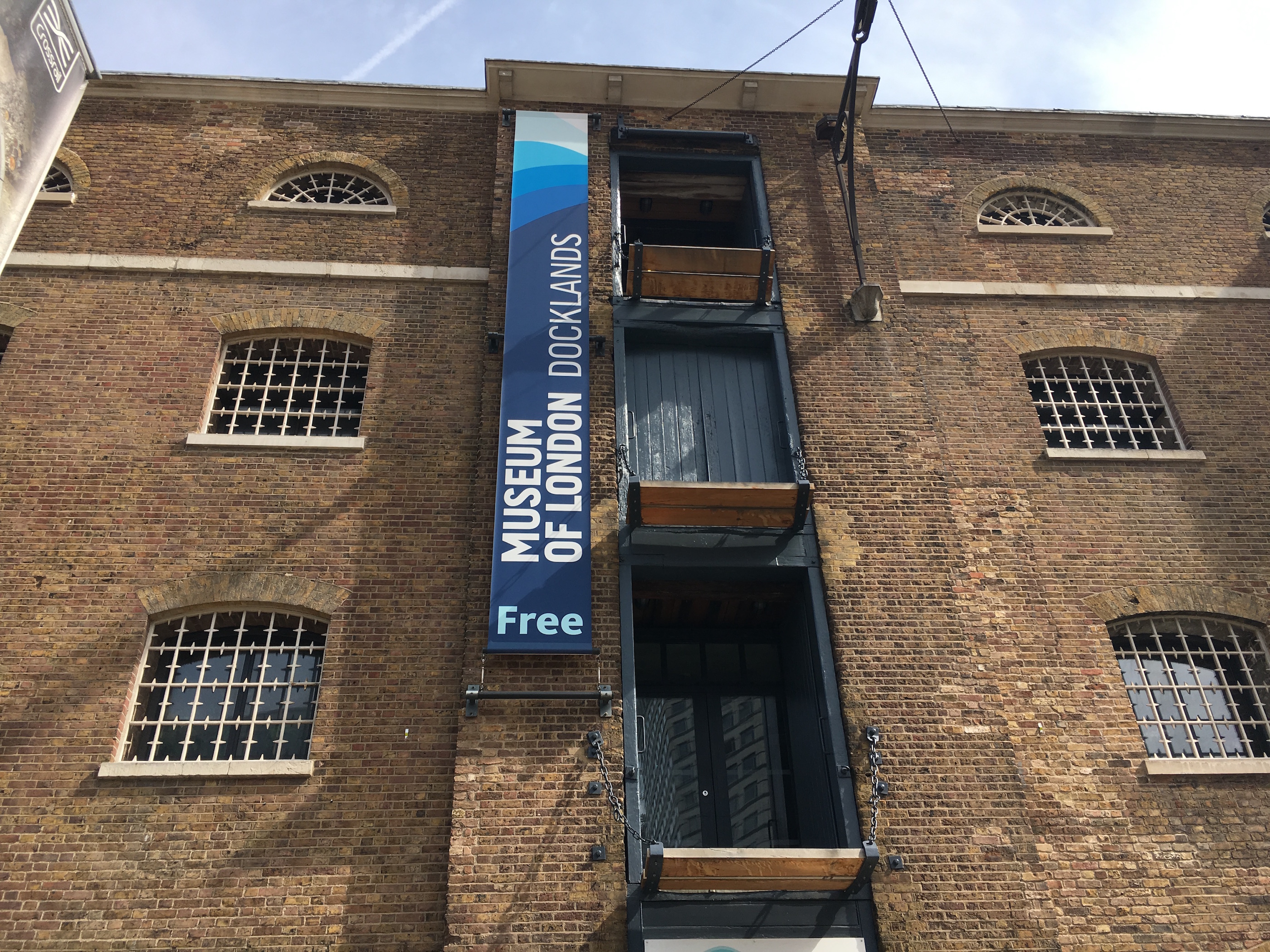Difference between revisions of "Museum of London Docklands"
From Londonhua WIKI
(→Museum of London Docklands) |
(→Museum of London Docklands) |
||
| Line 6: | Line 6: | ||
|bodystyle = width:25em | |bodystyle = width:25em | ||
|image = [[File:OGDocklands.JPG|x450px|alt=Article Image]] | |image = [[File:OGDocklands.JPG|x450px|alt=Article Image]] | ||
| − | |caption = | + | |caption = Taken by Olivia Gibbs |
|label2 = Taken by '''Olivia Gibbs''' | |label2 = Taken by '''Olivia Gibbs''' | ||
Revision as of 23:59, 22 May 2017
Museum of London Docklands
 Taken by Olivia Gibbs | |
| Main Entrance |
|---|
Overview
The Museum of London Docklands is on the Isle of Dogs and goes through the history of the London Docklands. They have exhibits on everything from slavery and sugar trade, to the war, and how the docklands took part to prepare for D-Day. The Museum of London Docklands is operated in partnership with the Museum of London and you can see similarities in the two museums.
Contents
The Greenland Dock
One of the many different docks in London, The Greenland Dock was London's second wet dock established between 1696-1699. It was created to refit ships, specifically East India ships, and not cargo similar to the Blackwall Yard Dock built in 1660. The dock is located at Rotherhithe and built originally as the Howland Great Dock. It was originally named after Elizabeth Howland, granddaughter of Sir Josiah Child, the dictatorial chairman of East India Company. And after she was married money was raised to build the dock and add a second dry dock on the Howland's Rotherhithe estate. It was originally used to refit East India ships but by 1720s Greenland whalers also used the dock which led to the construction of blubber boiling houses on the south side.
The South Sea Company financed 172 unprofitable whaling ships from the dock between 1725-1732. The company did so because of the import duty exemption and the fact Greenland 'right whale' had become prized for its oil rich blubber and whalebone. In this little gallery are two Narwhal tusks from the late 18th century. Narwhals are a part of the dolphin family and were considered lucky by whalemen since they signaled presence of Greenland whales. The narwhal tusks, such as the ones on display, are made of high quality ivory and made the whalemen refer to narwhals 'unicorns'. Also, narwhal blubber created a high grade oil.
London Sugar & Slavery
Slavery
As London was growing as a center for finance and commerce from the 1700s onwards, they unfortunately ran into a popular crime against humanity. With everyone wanting wealth, tribal communities in West Africa were torn apart, tens of millions of people displaced and transported, and many were tortured and killed.
When this trend started, African People had not been new to the area, they arrived in Britain before the 1500s. By the late 1780s there were about 25,000 people of African Origin living in London. Most had liberated themselves living free and independently with London's poorer classes, but some where well-to-do members of the society.
The slave trade hurt many African societies and allowed European nations to impose European rule. This was an assault on African identities. Starting in the early 1600s, Londons merchants were importing increasing amounts of gold and ivory form Africa, but little was known about the people who lived there. As Africa became the main source for slaves for the new world of the Americas, ignorance led to racism, which turned into exploitation.
European nations had a well-organized system for supplying plantations with labor. Many African people resisted the trade, but others made money off of it. By the late 1600s the slave trade in London was organized by the Royal Africa Company. In 1750 the Company of Merchants trading to Africa took over. They brought people form the interior and sold them on the coast. The Africans who collaborated in the trade also had workers who painted the forts, and men to carry people and supplies from the shore onto the ship. As the trade became more and more profitable, a new African 'elite' status was reached, which contributed to the destructive divisions in the African Society.
Warehouse
As soon as you start the museum in the third floor, you are standing on the top floor of one of Lendon's oldest dock warehouses. A warehouse type of bunding designed for storing goods. When it was in use as a warehouse, this Space was often piled high with valuable cargoes. Men known as dock labourers later as "dockers unloaded ships worked on quaysides, and trucked sacks and barrels to warehouses. Cargoes were taken directly into warehouses from the quaysides or hoisted to their upper floors. Trolle s and barrows were used to move goods to their allotted warehouse storage positions, or 'stows. Most items coming into the warehouses had to be weighed and sampled. Customs and Excise Officers, dock managers and merchants all needed to know the quantity and quality of cargoes received. Everything was strictly controlled to guard against theft, fraud and cargoes being misplaced. With thanks to the Port of London Authority, whose archives have significantly enriched the content of this gallery. The roof and floors of the warehouse are supported by timber columns. In 1901, part of the interior of No. 1 Warehouse was destroyed by fire. The dock company wanted to replace the timbers and floors with reinforced concrete. However, as this would have cost more than the insurance, they used the original materials.
Measurement
Natalie will be writing about this
Tunnels
The Thames Tunnel
Peter will be writing about this
References
If appropriate, add a references section
External Links
If appropriate, add an external links section
Image Gallery
If appropriate, add an image gallery
</nowiki>